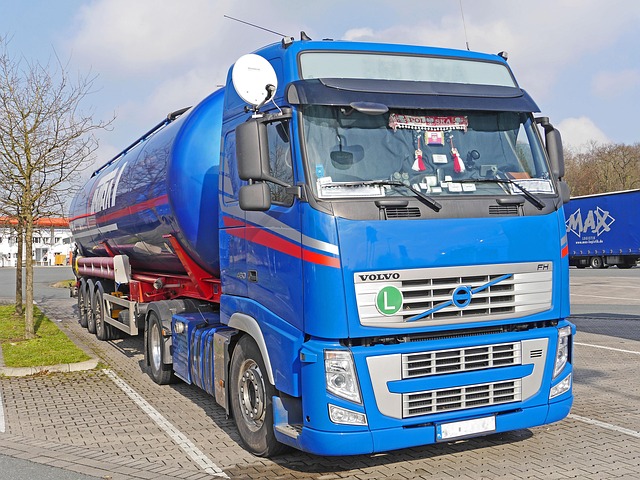Registering a car in California involves understanding a meticulous process, starting with crucial VIN (Vehicle Identification Number) verification. This guide breaks down every step, from gathering essential documents for VIN checks to navigating the DMV registration process. Learn how to conduct a thorough VIN inspection and discover post-registration tasks for a seamless experience. By following these steps, you’ll ensure compliance with California’s regulations, making your car registration smooth and efficient.
- Understanding the California Car Registration Process
- Gather Required Documents for VIN Verification
- How to Conduct a Vehicle Identification Number (VIN) Check
- Steps to Register Your Vehicle with the DMV in California
- Post-Registration: Important Considerations and Next Steps
Understanding the California Car Registration Process

Understanding the California Car Registration Process
In California, registering a car involves several steps that ensure compliance with state regulations. The process begins with gathering essential documents, including proof of ownership, proof of insurance, and a valid driver’s license. Once these are in order, the next crucial step is the Vehicle Identification Number (VIN) verification. This involves inputting your vehicle’s unique VIN into state databases to check its history, ensuring it’s not stolen or has any outstanding issues. A mobile vin verifier can simplify this process by performing a VIN inspection on-site, making registration more convenient.
After successful VIN verification, you’ll need to visit a California Department of Motor Vehicles (DMV) office with your documents. Here, staff will process your application and conduct additional checks before issuing a registration certificate and license plate. It’s important to remember that the DMV offers both in-person and online services, with some processes potentially faster and more efficient when done digitally. This streamlined approach ensures that California residents can quickly get their vehicles registered while maintaining robust safety standards.
Gather Required Documents for VIN Verification

To initiate the car registration process in California, you’ll first need to gather essential documents for VIN (Vehicle Identification Number) verification. This step is crucial as it ensures that your vehicle meets all legal standards before it can be licensed and insured. Key documents required include your vehicle’s title, proof of insurance, and a valid driver’s license or identification card. Additionally, you might need to provide a completed California Vehicle Registration application form, often available at the DMV (Department of Motor Vehicles) website or local offices.
For a seamless VIN verification process, consider utilizing a mobile vin verifier or scheduling an on-site vin inspection. These services offer convenient and efficient ways to validate your vehicle’s history and specifications, ensuring you have all necessary information for a smooth car registration in California.
How to Conduct a Vehicle Identification Number (VIN) Check

Conducting a Vehicle Identification Number (VIN) check is a crucial step in registering your car in California. This process ensures that the vehicle’s history is accurate and helps prevent fraud. You can perform a VIN verification through various official channels, including the California Department of Motor Vehicles (DMV) or reputable third-party services.
For a quick and convenient mobile vin verification, you can utilize online tools or dedicated mobile apps. These digital solutions allow you to input your VIN and instantly access detailed information about the vehicle’s past, including ownership history, accident reports, and maintenance records. A vin inspection through these methods is straightforward and can be done from the comfort of your home or on the go, saving you time and effort during the registration process.
Steps to Register Your Vehicle with the DMV in California

Registering a car in California involves several straightforward steps, ensuring your vehicle is road-ready and legally permitted. First, prepare the necessary documents, including proof of ownership, vehicle identification number (VIN) verification, and your driver’s license. You can obtain a VIN from your vehicle’s registration or by checking the frame, engine, or underbody—a process easily facilitated with a mobile vin verifier.
Next, visit a California Department of Motor Vehicles (DMV) office or use their online services to register your car. During this process, they’ll verify your VIN through an inspection, ensuring it matches the vehicle’s details. Once validated, you can complete the registration by paying the applicable fees and providing any additional required documentation. This meticulous approach guarantees that every vehicle on California’s roads is accurately documented and safe for operation.
Post-Registration: Important Considerations and Next Steps

After successfully registering your vehicle in California, there are several important considerations and next steps to ensure a smooth ownership experience. One crucial aspect is maintaining accurate records, especially the Vehicle Identification Number (VIN) information. It’s essential to have a reliable VIN verification process to confirm the authenticity of your car’s details. Consider utilizing mobile VIN verification services that offer convenient and quick inspections. These mobile VIN checkers can be particularly useful for ensuring the vehicle’s history is free from any discrepancies or potential theft.
Additionally, keeping up with routine maintenance and servicing will contribute to the long-term reliability and safety of your vehicle. California has specific regulations regarding emissions testing and other safety standards, so staying compliant is essential. Remember to stay informed about any updates or changes in registration requirements to avoid any future issues.
Registering a car in California involves several steps, from gathering essential documents to conducting a VIN verification. By understanding the process and ensuring all requirements are met, you can seamlessly navigate the DMV registration process. Remember that accurate VIN verification is crucial for a successful registration, so take the time to double-check your vehicle’s details. With these steps completed, you’re one step closer to hitting the road legally in the Golden State.
